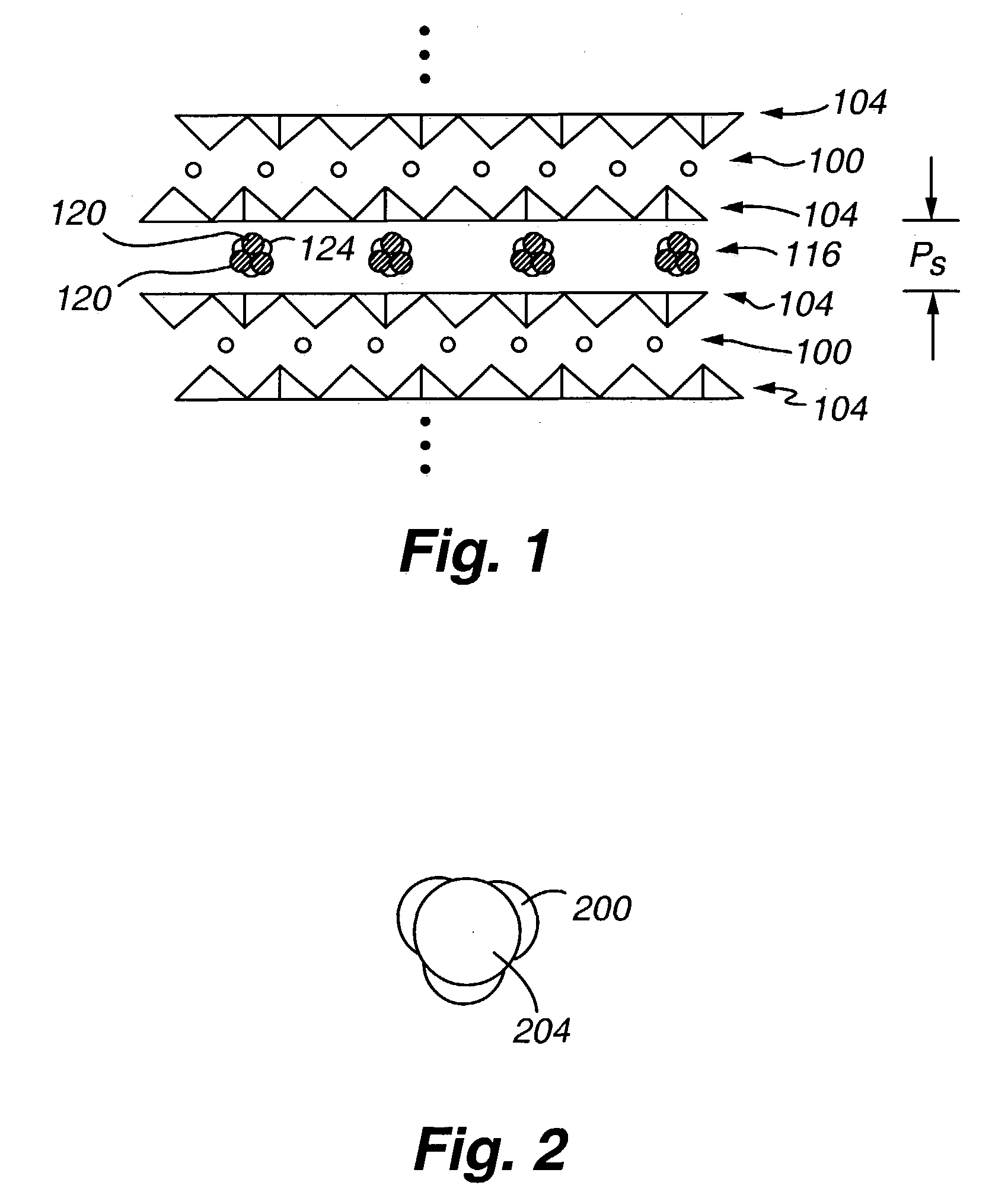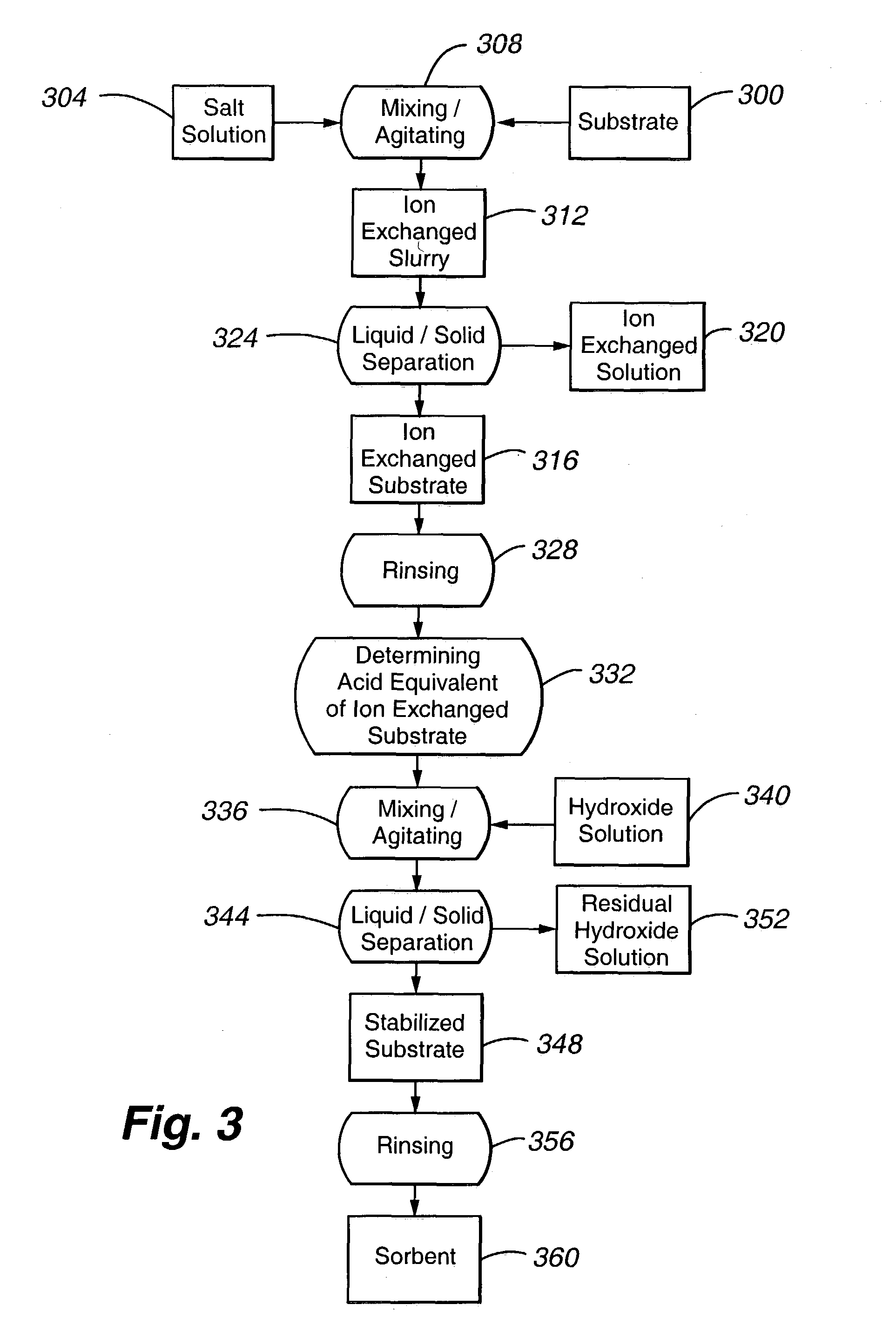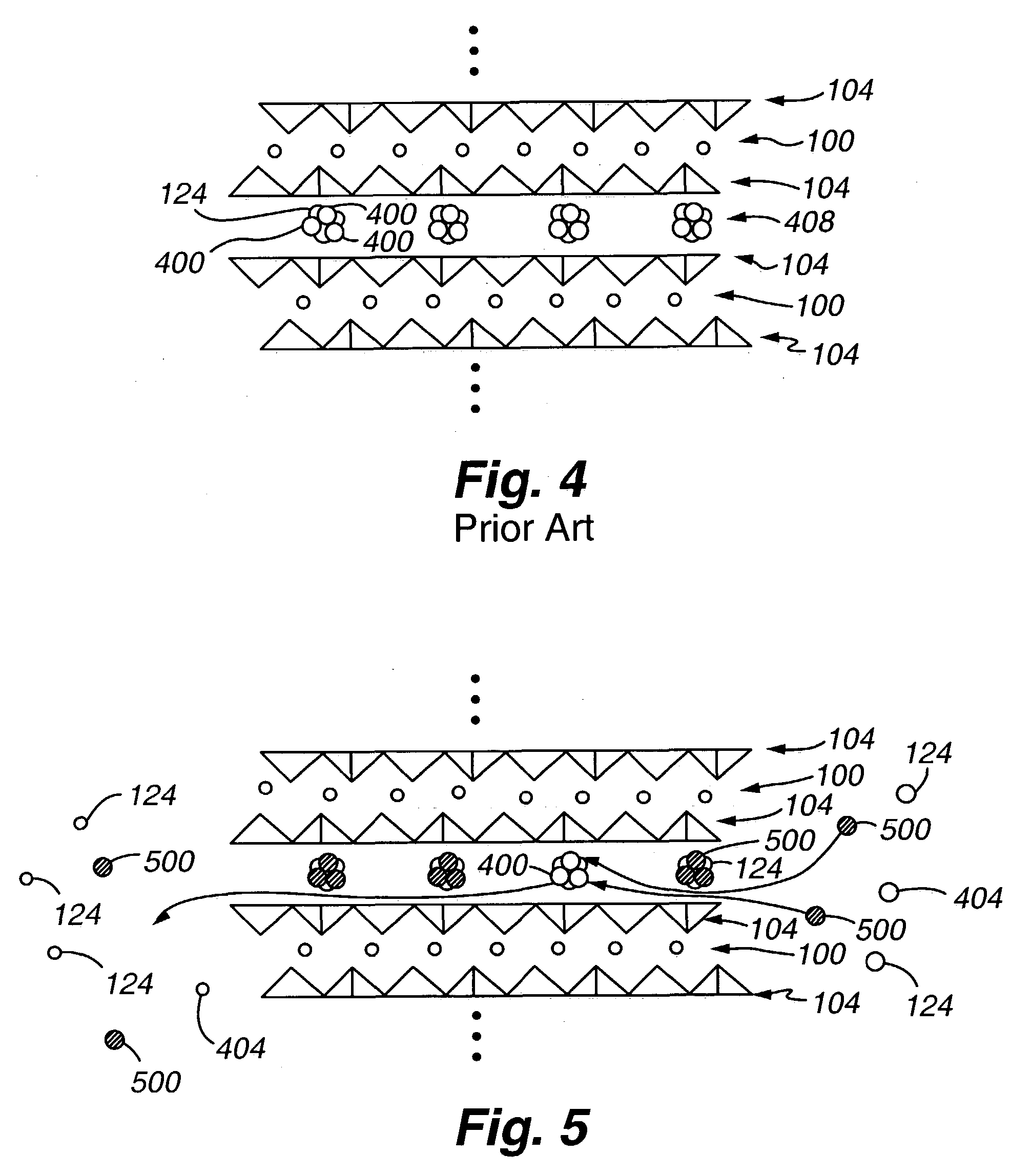High capacity regenerable sorbent for removal or arsenic and other toxic ions from drinking water
a sorbent, high-capacity technology, applied in water/sewage treatment by ion exchange, physical/chemical process catalysts, other chemical processes, etc., can solve the problems of decreased red and white blood cell production, and increased risk of arsenic and other toxic ions, etc., to achieve improved and cost-effective control, reduce unit cost, and economic efficiency
- Summary
- Abstract
- Description
- Claims
- Application Information
AI Technical Summary
Benefits of technology
Problems solved by technology
Method used
Image
Examples
example 1
[0068] This Example describes preparation of sorbents of the present invention using various concentrations of ferric chloride and sodium hydroxide. These sorbents were then compared to a commercially available arsenic sorbent in an isotherm experiment to determine arsenic binding capacity.
[0069] All steps in all Examples (unless otherwise noted) were carried out at room temperature. Using the conditions / substrates / reactants noted in Table 1 below, 20 g each of vermiculites Palabora #4 (obtainable from Palabora, Inc. Palabora, South Africa), Carolina #5 and Virginia #4 (obtained from Virginia Vermiculite Ltd, Louisa, Va.) were weighed out and sieved to remove fines and placed in a beaker. All other reagents are obtainable from Sigma Chemical, St. Louis, Mo.) except as noted. To the dry sieved vermiculite, 200 milliliters (mL) of either a 10% or 20% (w / v) aqueous solution of ferric chloride was added. The reaction was then shaken at approximately 50 rpm overnight. At the end of 2 ho...
example 2
[0073] This Example describes preparation of sorbents of the present invention with high concentrations of ferric chloride (either 80% or 40% w / v ferric chloride) and with either a 2 hour or overnight incubation time. These sorbents were then compared to commercially available arsenic sorbents and a sorbent of the present invention prepared using lower ferric chloride as a control in an isotherm experiment to determine arsenic binding capacity.
[0074] Twenty grams each of vermiculite Virginia #4 (obtained from Virginia Vermiculite, Ltd) were placed in four beakers in the same manner as Example 1. To two of the beakers, 200 mL of an 80% ferric chloride aqueous solution was added. One of the 80% ferric chloride treated vermiculate beakers was allowed to incubate for 2 hours, and the other overnight. To the other two beakers, 200 mL of a 40% ferric chloride aqueous solution was added, and one of the 40% ferric chloride treated vermiculite beakers was allowed to incubate for 2 hours, an...
example 3
[0078] This Example compares the As adsorption capacity of a sorbent of the present invention and a commercially available arsenic adsorbent at pH 7.0.
[0079] Sorbent UC-CC-X001 and GFH™ were prepared as described in Example 1. Isotherm experiments were carried out as described in Example 1 according to the matrix in Table 3, below.
TABLE 3Isotherm test matrix per pH per sorbentStarting total AsSorbentconcentrationsFormulationpHAs(III) / As(V)(ppm)UC-CC-X001750 / 5050UC-CC-X001750 / 5010UC-CC-X001750 / 505UC-CC-X001750 / 501UC-CC-X001750 / 500.5GFH ™750 / 5050GFH ™750 / 5010GFH ™750 / 505GFH ™750 / 501GFH ™750 / 500.5
[0080] Results are shown in FIG. 13. FIG. 13 is an isotherm graph comparing sorbent capacity in mg As / g sorbent as a function of the equilibrium concentration of As for both a sorbent of the present invention and a commercially available arsenic sorbent, GFH™. The results show that both are effective at removing As from water, and the performance of a sorbent of the present invention is com...
PUM
| Property | Measurement | Unit |
|---|---|---|
| pH | aaaaa | aaaaa |
| pH | aaaaa | aaaaa |
| pH | aaaaa | aaaaa |
Abstract
Description
Claims
Application Information
 Login to View More
Login to View More - R&D
- Intellectual Property
- Life Sciences
- Materials
- Tech Scout
- Unparalleled Data Quality
- Higher Quality Content
- 60% Fewer Hallucinations
Browse by: Latest US Patents, China's latest patents, Technical Efficacy Thesaurus, Application Domain, Technology Topic, Popular Technical Reports.
© 2025 PatSnap. All rights reserved.Legal|Privacy policy|Modern Slavery Act Transparency Statement|Sitemap|About US| Contact US: help@patsnap.com



